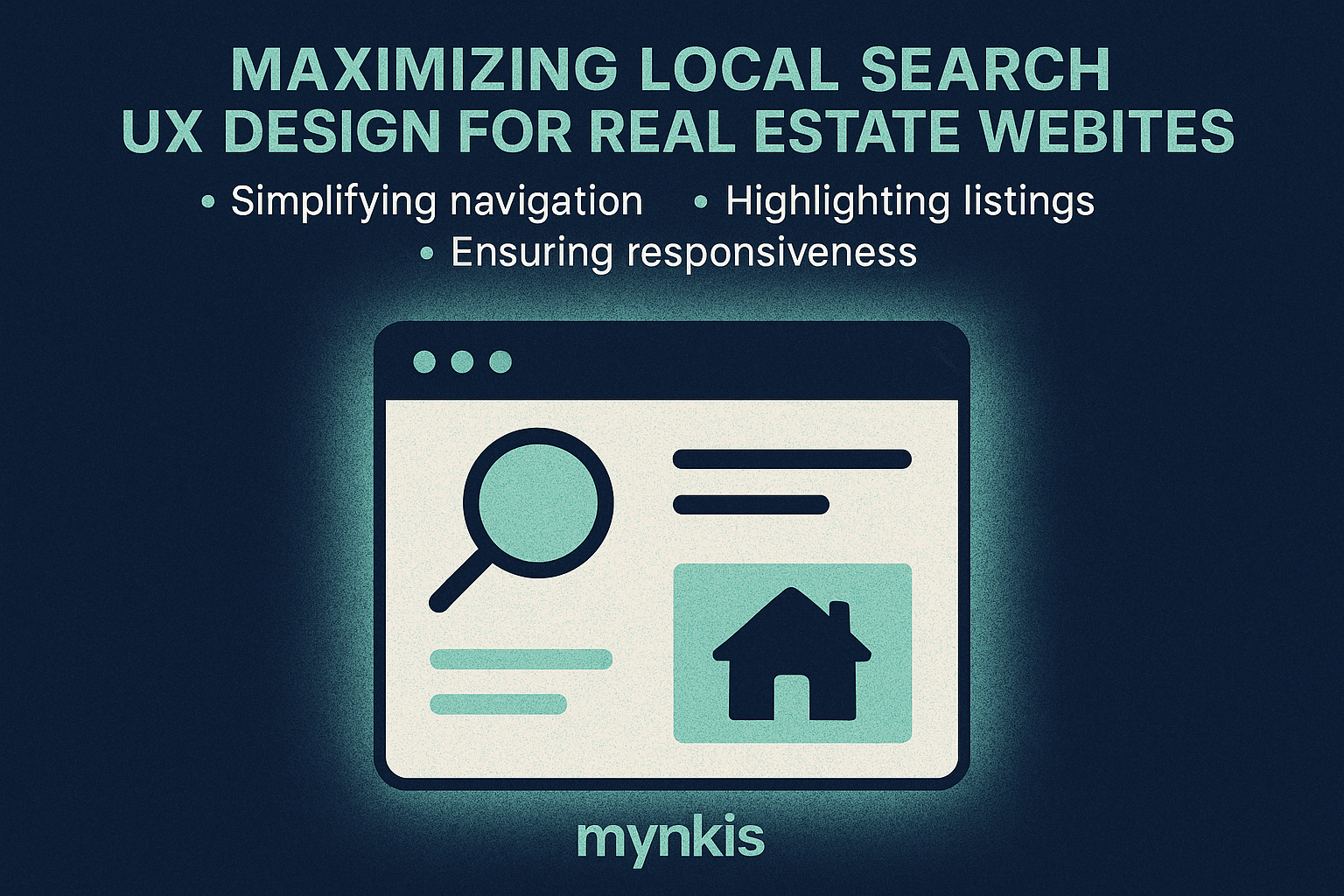Schedule a Demo
Creating a website for real estate brokerage isn't just about posting listings; it's an art of crafting an experience that draws in potential buyers and optimizes for local search. In my work with brokers seeking to enhance their property listings' visibility, I've noticed a pivotal link between user experience (UX) design and search engine optimization (SEO). A seamless UX can significantly improve your site's performance on local searches, driving more targeted traffic to your listings.
Consider the journey of a user searching for a new home. They're likely starting their quest online, tapping keywords related to neighborhoods, price ranges, and property types. Your site's UX design plays a crucial role in ensuring these searchers stay engaged and feel encouraged to explore further. A well-designed interface not only aids in navigation but also allows for smoother crawling by search engines, particularly Google.
Responsive design isn't just a buzzword; it's a necessity in today's digital real estate market. When I work with clients, we prioritize ensuring their websites look and function beautifully on any device, from smartphones to desktops. This not only caters to a broader audience but directly impacts SEO. Google, for instance, uses mobile-friendliness as a ranking factor. A responsive site means higher engagement rates, lower bounce rates, and ultimately, better performance in local search results.
Mobile users are often looking for properties on the go, and if your site doesn't adapt to their device, you risk losing potential clients. A seamless mobile experience means faster load times and easier navigation, both of which are beneficial for both UX and SEO.
Navigation isn't just about finding your way around a website; it's also about guiding search engines to what's important on your site. In discussions with SEO experts at companies like Moz, I've learned that structuring your site's navigation with local keywords can directly boost its relevance to local search queries. For instance, categories or filters like 'Homes in Downtown LA' not only help users find relevant listings but also signal to search engines the geographic focus of your content.
Additionally, ensuring that your site's navigation is intuitive enhances user retention. Users who can easily find what they're looking for are more likely to spend more time on your site, signal to search engines that your site is valuable, and, as a result, improve your site's rankings for local queries.
Content placement goes beyond traditional SEO strategies. Strategically placing high-value real estate listings or local neighborhood information can enhance user engagement. It's not just about what content you have, but how it's presented to the user. Features like scroll animations or hover effects can draw attention to these key sections without detracting from load times, a crucial aspect for both UX and SEO.
I've advised numerous clients on the benefits of integrating local community information, school districts, or lifestyle features right alongside property listings. This technique not only caters to user needs for in-depth information but also leverages 'long-tail' local keywords that can rank well in specific searches.
Website speed directly affects both user experience and search rankings. A study by Google shows that if a website takes more than 3 seconds to load, bounce rates increase significantly. In the competitive real estate market, where clients' time is precious, fast-loading sites make a significant difference. Speedy pages contribute to a positive user experience, keeping visitors engaged longer and, by proxy, reflecting positively in your SEO metrics.
Enhancing your site's performance might involve optimizing images, minimizing JavaScript, and leveraging Content Delivery Networks (CDNs). Each of these strategies not only aids in speeding up your site but also promotes sustainability by reducing server load and energy consumption.
Personalization on real estate websites can take user experience to the next level while also refining your SEO strategy. By allowing users to customize their search experience based on preferences or history, you cater to individual needs more effectively. In my consultations, the use of cookies and machine learning algorithms to suggest properties based on prior searches has been a game-changer.
This level of personalization can lead to increased user engagement and time spent on the site. From an SEO standpoint, increased engagement reduces bounce rates and signals to search engines that your site is providing value to visitors, reinforcing local keyword relevance.
Trust signals are the unsung heroes of both UX and SEO in the realm of real estate. Transparent contact information, clear privacy policies, and SSL certifications not only build trust with users but also enhance your site’s credibility in the eyes of search engines. According to a recent analysis by BrightLocal, trust signals can significantly impact local search rankings.
Integrating these signals into your UX design promotes a feeling of security and encourages users to take further actions on your site, such as contacting an agent or requesting a property viewing. This trust leads to more conversions, reinforcing your site’s effectiveness and SEO performance.
Balancing SEO and UX is not just about technical tweaks but also about understanding your user's needs and the subtleties of search behavior. By focusing on these fundamental UX design principles, real estate brokers can create websites that not only serve their audience but excel in local search rankings. Based on the available research, these strategies can greatly enhance visibility and user satisfaction, though individual results may vary according to specific circumstances and markets.
Keep in mind, when adapting these strategies, consulting with professionals in both UX design and SEO fields can provide tailored insights, especially when considering the specific competitive landscape of your local market.
